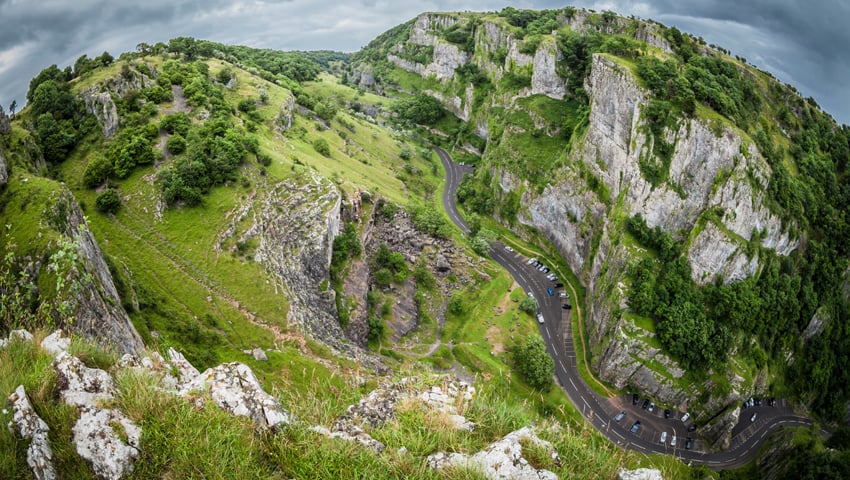A VAST new “super nature reserve”, spanning the world-famous Cheddar Gorge and the Mendip Hills and encompassing some of the country’s most precious habitats, has been created.
The declaration of the new Mendip “super” National Nature Reserve (NNR) by Natural England and partners will conserve and help restore 1,413 hectares of steep limestone slopes, traditional wildflower grasslands, ancient wooded combes, spectacular gorges and rocky outcrops. It will bring together 31 existing nature reserves and more than 400 hectares of new land which will now be managed primarily for conservation, as well as creating more space greater access to nature for local people.
The Mendips are home to a variety of wildlife such as the nationally endangered lesser and greater horseshoe bats, adder, skylark, water vole, hazel dormouse, small pearl-bordered fritillary, black oil beetle, including endemic plants such as Cheddar pink and the nationally rare little robin and purple gromwell.
Ian Barrett, Chief Executive at Avon Wildlife Trust said: “We’re very excited to collaborate with partner organisations to be part of this new super National Nature Reserve in the Mendips. By working together across this beautiful landscape, we are helping to help enable nature’s recovery across the region so that much loved wildlife can survive and thrive.”
Creating larger more joined-up spaces for nature is crucial to halting its decline and bringing about an increase in populations. The site will cover the Mendip Hills Area of Outstanding Natural Beauty, stretching from woodlands in England’s smallest city of Wells, across the southern Mendip slopes and plateau and reaching right out to Brean Down in the Severn estuary.
Tony Juniper, Chair of Natural England, said, “Today’s declaration of the new Mendip National Nature Reserve is a huge step for Nature recovery, not just in Somerset but the country as a whole. This treasure trove of ancient woodlands, rich wildflower grasslands and stunning geology is of great national importance and sustains a huge variety of wildlife. There are birds, small mammals, rare butterflies and plants that are found only here.
“Creating this new National Nature Reserve will be a step along the road of enhancing the biodiversity of the Mendip Hills – making it a bigger, better and more joined up place for wildlife to thrive.” It also gives even more opportunities for the local community and visitors to connect with Nature, history and the local heritage.”
The site is the second in the new King’s Series of National Nature Reserves. The Series will see the creation of five major National Nature Reserve declarations every year for the next five years – 25 in total.
Along with Natural England, Mendip Hills AONB, the National Trust, Longleat/Cheddar Gorge Caves, Somerset and Avon Wildlife Trusts, Butterfly Conservation, the Woodland Trust and the South West Heritage Trust are all working in partnership to manage the National Nature Reserve with a shared objective for nature recovery.
Multi-party National Nature Reserves such as Mendip are increasing in number, bringing together the skills, knowledge and long term commitments of different organisations to deliver the three purposes of the designation: nature conservation, environmental science and public access, enjoyment and engagement.
Lord Bath of Longleat Estate said, “Cheddar Gorge is one of Britain’s most spectacular natural landmarks, comprising a large and significant part of the Mendip Hills’ footprint and bio connectivity. As a private landowner of part of this special piece of Britain, we take our responsibility as custodians extremely seriously. Through the Cheddar Gorge and Caves enterprise, we work to attract many people to this area to enjoy and experience this outstanding part of the world. In addition, we work tirelessly to ensure this amazing mosaic of land is conserved for future generations of visitors to enjoy and populations of diverse wildlife to thrive.
“The formation of the new National Nature Reserve is a ground-breaking opportunity for conservation and land management. We look forward to making a real impact together with the other partners, not least for the species that are native to these habitats – from greater crested newts to dormice, and the extremely rare plants that flourish in abundance in our unique pocket of land.”
